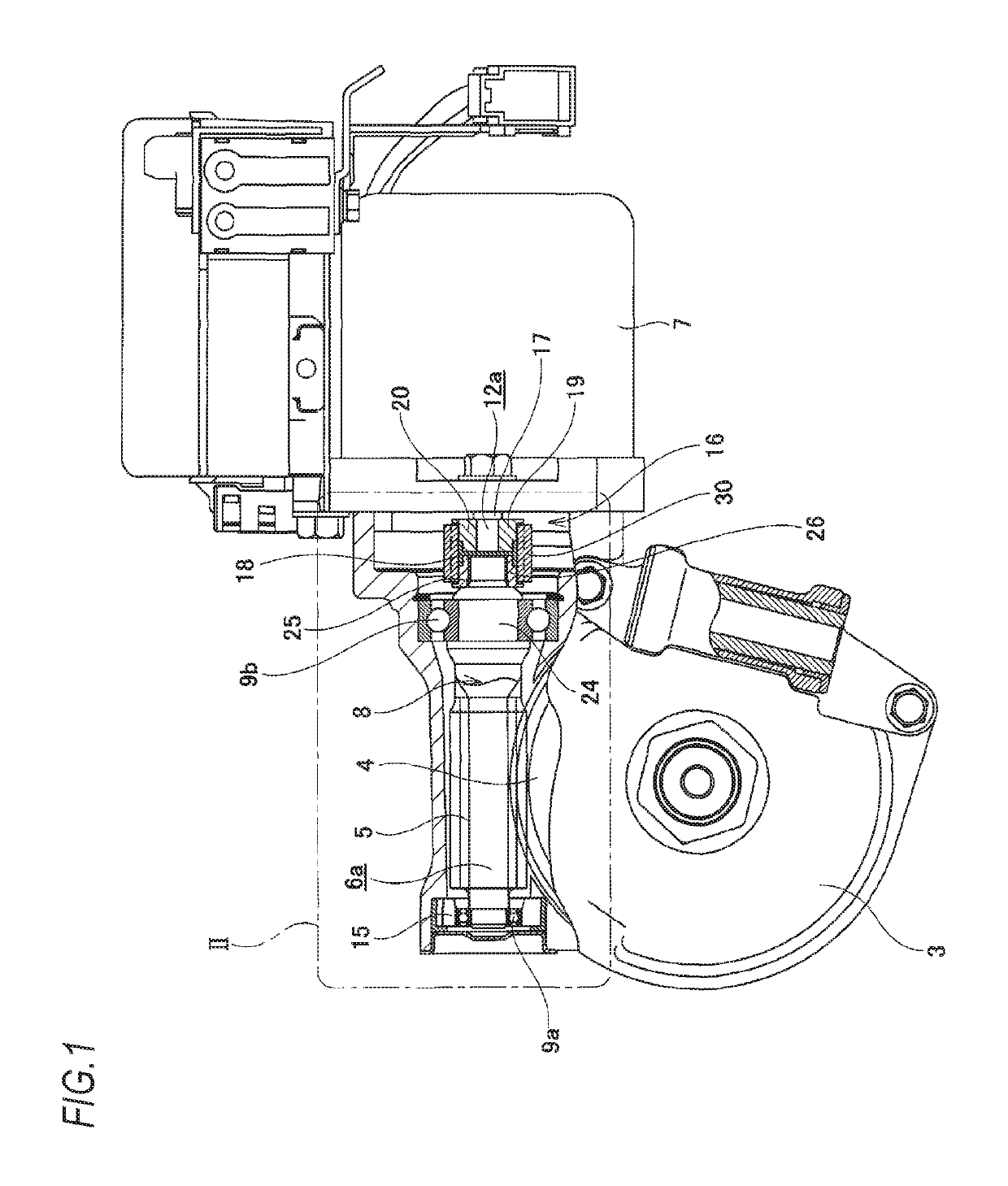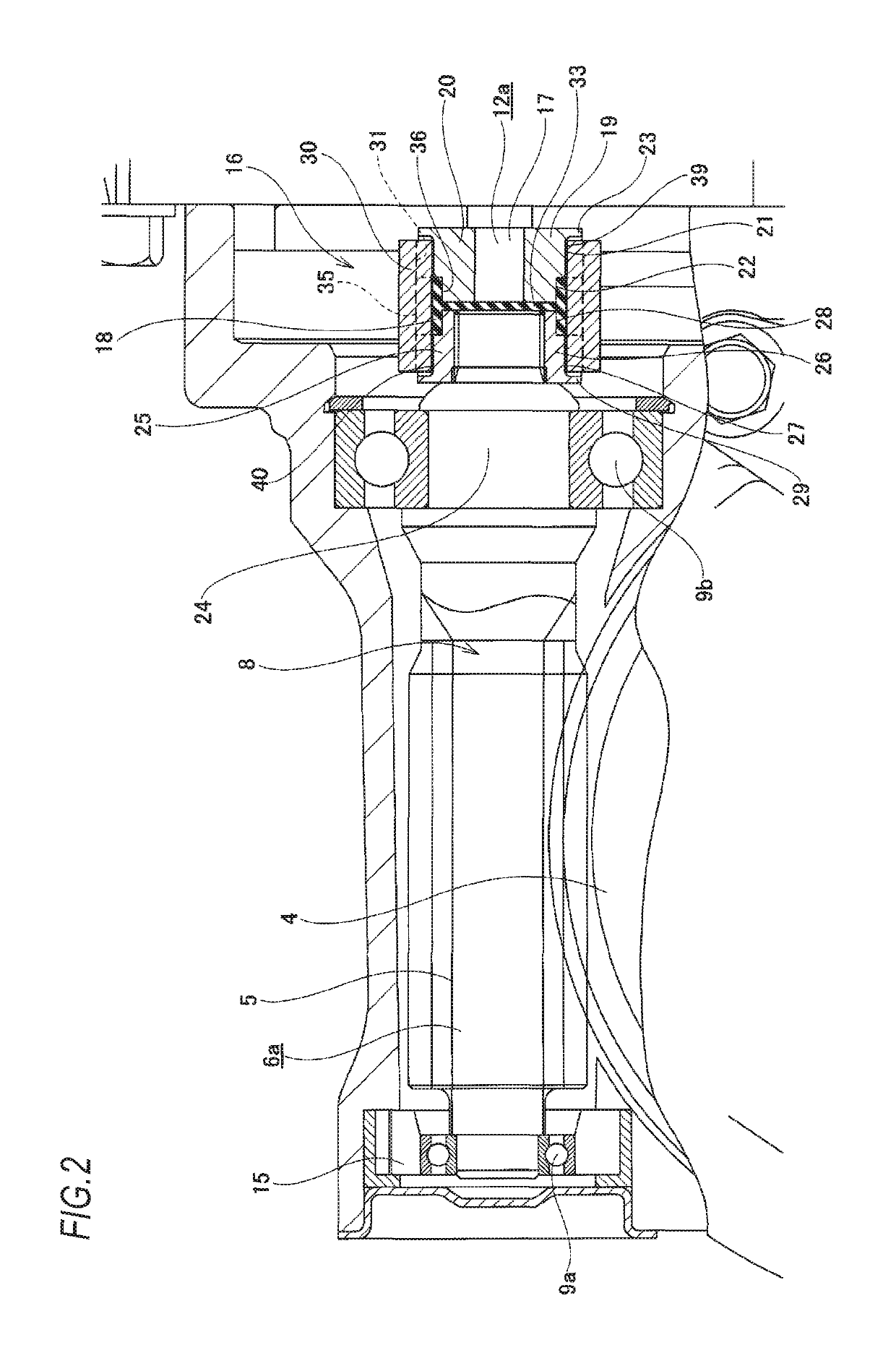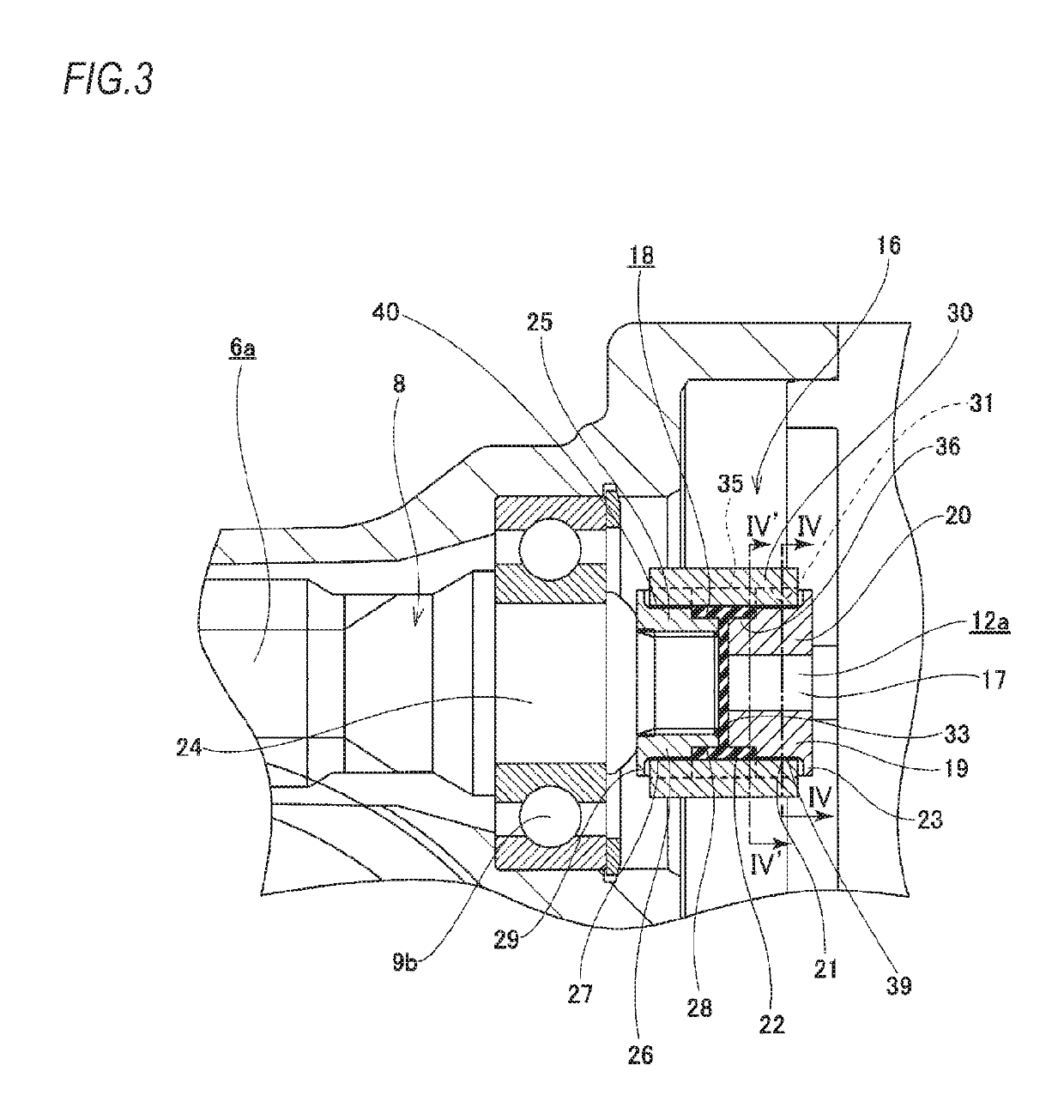Torque transmission joint and electric power steering device
a transmission joint and torque technology, applied in the direction of electric steering, yielding couplings, vehicle components, etc., can solve the problems of backlash at the spline engagement portion, inability to suppress abnormal noise, and inability to adjust the spline flexural angle, etc., to improve the assembling property, suppress abnormal noise generation, and suppress abnormal noise generation
- Summary
- Abstract
- Description
- Claims
- Application Information
AI Technical Summary
Benefits of technology
Problems solved by technology
Method used
Image
Examples
first embodiment
[0070]FIGS. 1 to 8 show a first embodiment of the present invention. The features of the present invention, including the first embodiment, are to implement a structure capable of suppressing generation of an abnormal noise such as gear striking noise when changing a rotational direction of an output shaft, which is a driving shaft, of an electric motor. In an electric power steering device of the first embodiment, a front end portion of a steering shaft 2 configured to rotate in a predetermined direction by a steering wheel 1 is rotatable supported within a housing 3, and a worm wheel 4 is fixed to this part, similarly to the conventional structure shown in FIGS. 21 and 22. Worm teeth 5 configured to mesh with the worm wheel 4 are provided on an axially intermediate portion of a worm shaft 6a. Both axial end portions of a worm 8 configured to rotate by an electric motor 7 are rotatably supported in the housing 3 by a pair of rolling bearings 9a, 9b. Further, a preload applying mech...
second embodiment
[0092]FIGS. 9 to 16 show a second embodiment of the present invention. A torque transmission joint 16a of the second embodiment has a driving-side transmission portion 20a, a driven-side transmission portion 26a, a coupling 30a and an elastic member 18a.
[0093]The driving-side transmission portion 20a is provided at the tip portion of the output shaft main body 17 of the output shaft 12a by supporting a driving-side transmission member 19a, which is provided separately from the output shaft main body 17, by interference fit, spline fitting or the like at a state where rotation can be made in synchronization with the output shaft 12a and axial displacement relative to the output shaft 12a is restricted. As shown in FIG. 13, the driving-side transmission member 19a has a driving-side cylindrical part 62 having a driving-side engagement hole 61 formed at a center portion, a driving-side concave-convex portion 39a configured by driving-side convex portions 63, 63 provided at a plurality...
third embodiment
[0118]Subsequently, the torque transmission joint according to a third embodiment of the present invention is described. In the second embodiment, the elastic bodies 46a, 46b configuring the elastic member 18a and the coupling 30a are separately assembled. However, in the third embodiment, the elastic bodies 46a, 46b are affixed to the coupling 30a. Since the other configurations are the same as the second embodiment, the descriptions are made with reference to FIGS. 9 to 16 of the second embodiment.
[0119]Specifically, in the third embodiment, the pair of elastic bodies 46a, 46b configuring the elastic member 18a is affixed to the coupling 30a by welding or adhesion using an adhesive or the like. That is, the circumferential side surfaces of the engagement pieces 34a, 34a (the circumferential wall portions 37a, 37a) configuring one elastic body 46a are affixed to the circumferential side surfaces of the protrusions 45, 45 provided at the other axial end portion of the coupling 30a. ...
PUM
 Login to View More
Login to View More Abstract
Description
Claims
Application Information
 Login to View More
Login to View More - R&D
- Intellectual Property
- Life Sciences
- Materials
- Tech Scout
- Unparalleled Data Quality
- Higher Quality Content
- 60% Fewer Hallucinations
Browse by: Latest US Patents, China's latest patents, Technical Efficacy Thesaurus, Application Domain, Technology Topic, Popular Technical Reports.
© 2025 PatSnap. All rights reserved.Legal|Privacy policy|Modern Slavery Act Transparency Statement|Sitemap|About US| Contact US: help@patsnap.com



